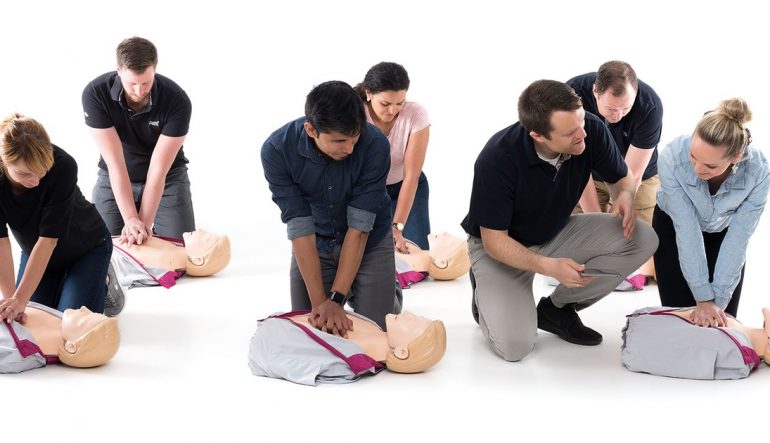Survival from out-of-hospital cardiac arrest depends on what happens before the arrival of Emergency Medical Services (EMS). Are you ready to help?
According to the first three steps of the sudden cardiac arrest Chain of Survival, this means:
- Recognising sudden cardiac arrest, and calling emergency services.
- Immediately starting CPR – ideally while another person finds and retrieves the nearest AED (automated external defibrillator).
- Rapid defibrillation.
Done quickly, these three steps can buy time for emergency services to arrive.
So, how can you be prepared to deliver the first three steps in the Chain of Survival?
Be ready to call for help
If someone collapses, is unresponsive and is not breathing normally (i.e. agonal breathing), it’s time to call emergency services.
Once connected, the operator will quickly assess the situation and give instructions on what to do next.
Many people hesitate at this early stage. That hesitation reduces the amount of time available to help the patient survive – and when it comes to sudden cardiac arrest, moments matter.
The faster you call, the better the chances of survival.
Be ready to perform CPR
Do you know CPR? If you’ve been trained, have you maintained that training?
Knowing the correct way to perform quality CPR can make all the difference when it comes to saving a life.
In the event of a sudden cardiac arrest, CPR buys time. Given there is so little time available to save someone in sudden cardiac arrest, this counts.
Learning CPR, and finding time to maintain your CPR awareness, is an investment – not only in your future, but in the future of others.
Be ready to defibrillate
Do you know where your nearest AED is?
Do you know how to find one in an emergency?
Depending on where you are when you call emergency services, they may be able to tell you your nearest AED.
Consider however, that of out-of-hospital cardiac arrests occur in the home. In these instances, being near a public access defibrillator is less likely.
There are many apps, such as GoodSAM, that offer free access to AED location maps in areas. Finding an AED map for your local area and keeping it handy, is a good start to maintaining AED awareness.
Once you know where an AED is, are you ready to use one?
CPR and First Aid Training covers AED awareness. If you are in a position where you need to use one, the EMS operator will also talk you through it.
Taking the time to familiarise yourself with AEDs will make all the difference however, if and when you find yourself in a position to help someone in sudden cardiac arrest.



